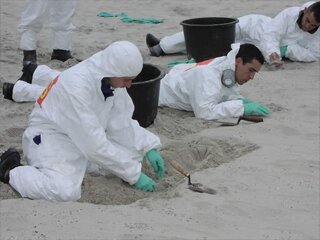Termination of shoreline cleanup - a technical perspective (2002)
22 May 2014

Brian Dicks, Hugh Parker, Karen Purnell and Richard Santner
Paper presented at CEDRE "Technical Lessons Learnt from the Erika Incident and Other Spills" seminar, 13-15 March 2002, Brest, France
There is always a balance to be struck between the different sensitivities and priorities on a shoreline when trying to decide the degree of cleaning which should be carried out after an oil spill and the methods that should be used. For example, aggressive cleaning techniques like hot water washing and the use of chemicals may be necessary to remove viscous oils or weathered residues from rocks to render them clean enough for recreational use, but they also increase environmental damage. Consequently, priorities need to be set depending on the use and environmental sensitivity of the shore in question. Often, there is no simple answer which will satisfy all parties.
The amount and type of oil and how it weathers, the difficulty of access, the safety of the clean up crews, the extent to which natural cleaning is likely to take place, the environmental impacts of the clean up and the rate of subsequent recovery, as well as the cost-effectiveness of the works are all factors that need to be taken into account in the overall determination of what level of clean up is reasonable in the circumstances. Careful consideration of these factors and whether any remaining oil impinges on aesthetic, environmental or economic concerns provides the basis for deciding whether further clean up is justified and also allows the point to be determined at which clean up should be terminated. Such technical considerations are reviewed and illustrated with examples drawn from recent spills in Chile, France, Taiwan, the UK and the USA.
Categories: Response Techniques, Papers
